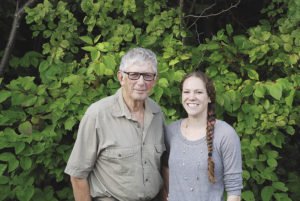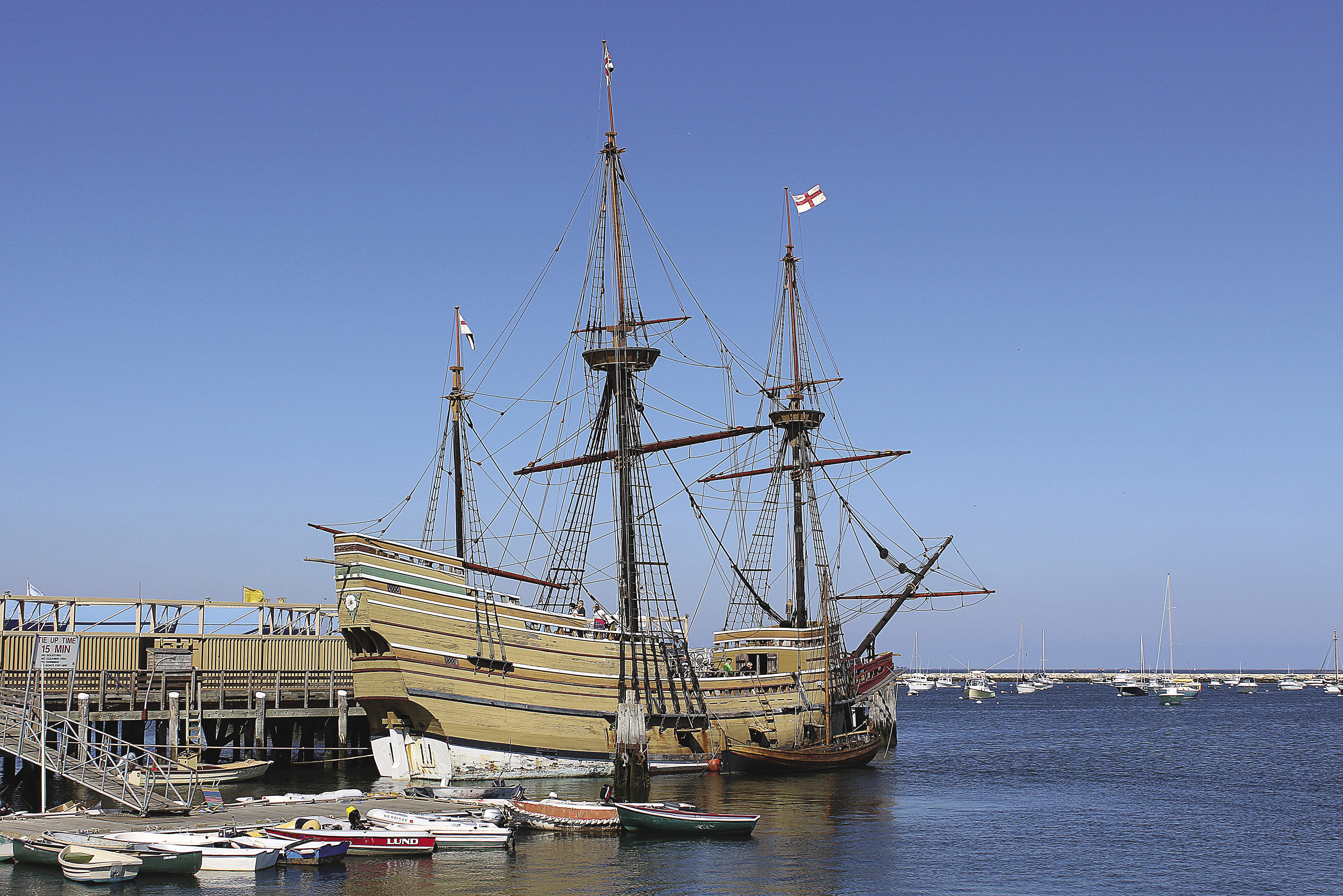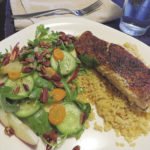So, what does the famous Mayflower ship that landed in America almost 400 years ago (November 1620) have to do with people today in our Northern Wilds?
Well, for starters, two people here at Northern Wilds (NW) Magazine are direct descendants of Mayflower passengers. Managing editor Breana Roy is the 14th and 13th great-granddaughter respectively of Stephen Hopkins (a kind of a swashbuckling adventurer of the 1600s) and his daughter Constance Hopkins. Glenn Warner, NW’s distributor in Thunder Bay, is the 10th and 9th great-grandson respectively of James Chilton (at 64, the oldest person aboard the Mayflower) and his daughter Mary Chilton.
Breana said, “Knowing that my roots run back to the Mayflower is amazing, to say the least. The hardships Stephen, and everyone, must have endured are unfathomable. And knowing that I’m standing here today because of him—as well as all my ancestors down the line—is truly remarkable and humbling.”
On September 6, 1620, the 100-foot (30 m) Mayflower left Plymouth, England to sail across the Atlantic Ocean with 102 English men, women and children (settlers that became known as the Pilgrims), approximately 30 crew members, two dogs (mastiff and springer spaniel), and it is believed some goats, chickens and pigs.
During the second half of the voyage, the Mayflower hit rough weather. She was battered by strong winds which shook the ship’s timbers. Sea water seeped in through failed caulking. Passengers became ill from the wet surroundings, insufficient food rations, poor ventilation and unsanitary conditions. Finally, after 66 days at sea, they sighted land on November 9.
Their destination was near the mouth of the Hudson River (then Colony of Virginia), however, bad weather pushed the ship north to the tip of Cape Cod, Massachusetts (today’s Provincetown). They anchored in the harbor on November 11 and for the next six weeks, sent out exploratory parties, including Stephen, looking for a place to settle.
Ten days later, on board the ship on November 21, 41 men—including Hopkins and Chilton—drafted and signed the historic Mayflower Compact establishing what historians call the first declaration of self-government on North American continent.
The site chosen for the colony was across the bay on the site of an abandoned village of the Wampanoag People. However, the Pilgrims continued to live on the ship, rowing to shore each day to build houses, returning at night, until March 1621 when enough houses had been built for everyone to live on the land. They named their colony Plymouth (Plimoth) Plantation. (Prince Charles had already named the area after it was mapped in 1614 by John Smith.)
The first winter was brutal with significant hardships; by spring, nearly half of the passengers and crew died. On April 5, 1621, the Mayflower with Captain Christopher Jones and what remained of his crew, left Plymouth to return to England.

So, how do today’s descendants learn about their Mayflower connection? Breana said, “It had been passed down through my family that we had a relative on the Mayflower, but we didn’t know who. My Grandma later connected us to Stephen Hopkins while researching on Ancestry. I was probably in the fourth grade when I found out.”
Breana credits her Mom and Grandma with doing extensive research into their family history, and while there are some pretty amazing stories about other relatives, her favourite story is Stephen Hopkins, her 14th great-grandfather from her maternal grandmother.
“From what I’ve gathered, he was quite the adventurer, but was also a troublemaker,” said Breana. “He survived a shipwreck in Bermuda aboard the Sea Venture and was sentenced to death for starting a mutiny, but was pardoned. Then, he made his way to Jamestown and then back to England, all before the Mayflower. Later in life, he was fined for serving alcohol in his tavern on a Sunday. It’s also said that William Shakespeare’s character Stephano in The Tempest was based off of Hopkins and his adventures in Bermuda.”
Glenn discovered his Mayflower connection about four years ago when researching his Roger Conant family line in Canada and U.S., which led him to his Mayflower family—the Chilton family (direct descendant) and Edward Winslow (10th great-uncle; later Governor of Plymouth). It was while the ship was anchored at Cape Cod that James Chilton died on board December 18, 1620; his wife (name uncertain) died six weeks later on January 21, leaving their 13-year-old daughter Mary an orphan.
According to legend, Mary Chilton is reported to have been the first European woman to step off the boat to land at Plymouth Rock. She later married John Winslow (brother of Edward), had 10 children and moved with family to Boston where she died in 1679.
As things gear up for the “2020 Commemoration Mayflower Voyage 400 Year Anniversary 1620-2020,” the Plymouth-based General Society of Mayflower Descendants report an increased interest by people wondering whether they are descendants of the Mayflower Pilgrims. In a recent online Boston news article, the Society’s governor general Lea Filson said there are an estimated 35 million people worldwide descended from the Mayflower Pilgrims, with approximately 10 million in the U.S. Membership in the Society is open to any person able to document their descent from at least one of the Mayflower passengers. Their website (themayflowersociety.org) lists Minnesota and Canada each having a Society chapter.
In 1955-56, a full-size reproduction of the original Mayflower ship was built in Devon, England and in 1957, the Mayflower II recreated the 1620 voyage to America. Owned by the Plimoth Plantation, the Mayflower II—a main attraction on Plymouth waterfront—is currently being restored to pristine condition for the 400th anniversary in Plymouth in 2020.
The Myth of the First Thanksgiving by the Pilgrims
It is a common myth that the first feast that the Mayflower Pilgrims held in fall 1621 was America’s “First Thanksgiving.” It was not. The Pilgrim’s feast was a three-day harvest festival celebrating a successful growing season, a secular event—not a Thanksgiving—with dancing, singing songs, drinking and sports, and was attended by about 90 members of the Wampanoag people and their Chief Massasoit (with whom the Pilgrims had signed a peace treaty on March 22, 1621).





